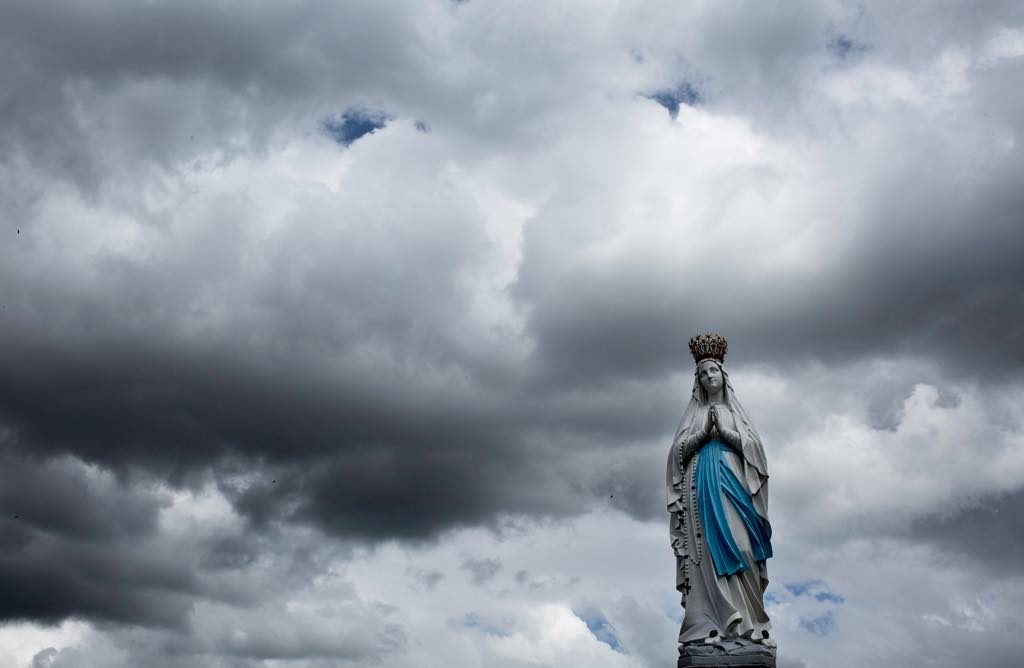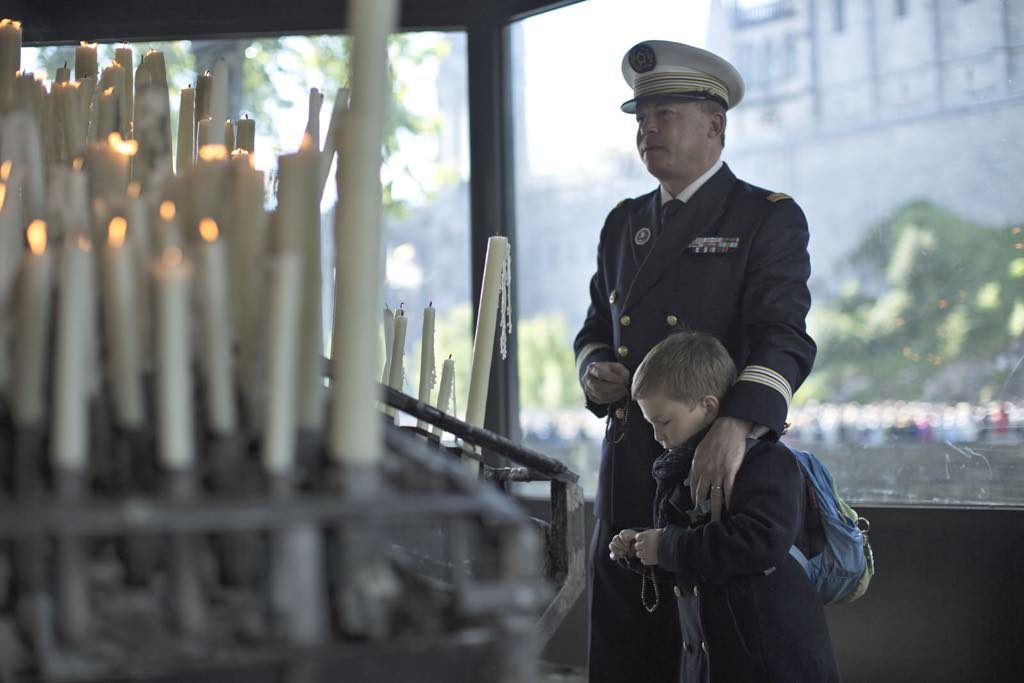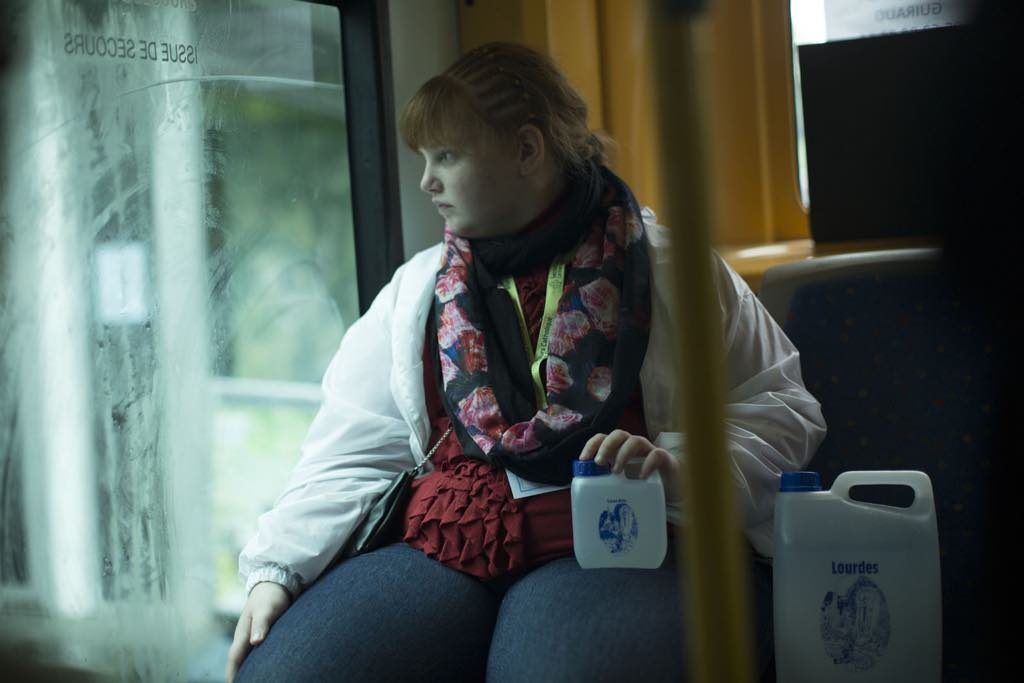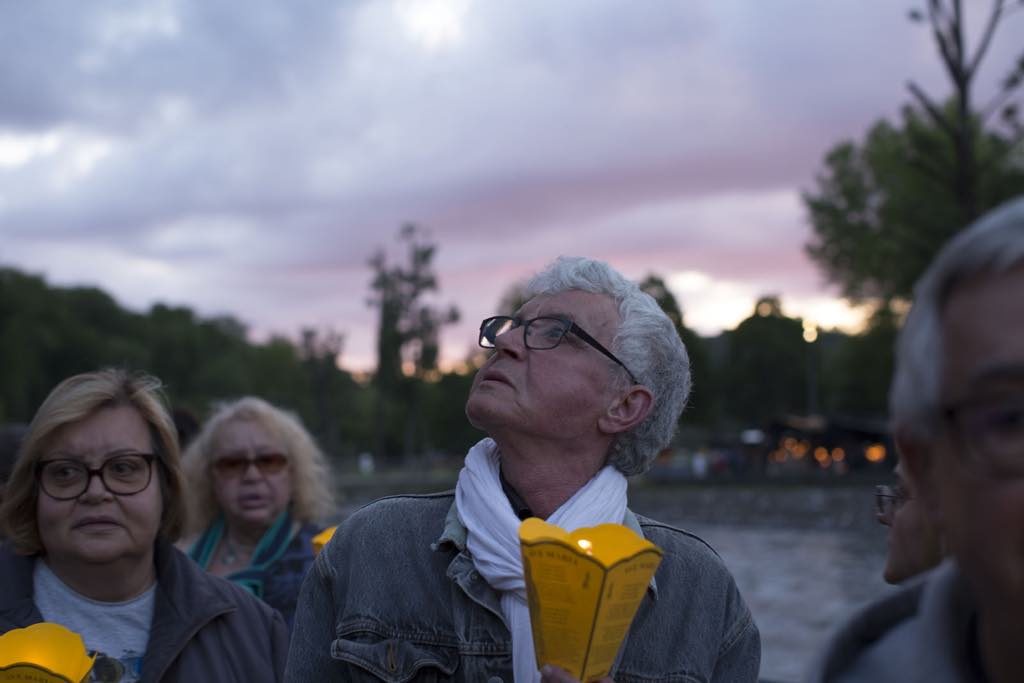
Ever wonder what really goes on at Lourdes, aside from a roaring trade in bottled holy water, statuettes of the Virgin Mary, rosaries and a multitude of kitschy souvenirs? The new documentary Lourdes, by Thierry Demaizière and Alban Teurlai (both non-believers, by the way), offers a deep immersion into a pilgrimage to Lourdes – just a small market town until 1858, when the Virgin Mary appeared to a girl named Bernadette and told her to drink the water from a spring in a grotto. In France today, the city is second only to Paris in number of annual visitors, at 6 million.
Using the fly-on-the-wall technique and focusing in closely on its subjects, the film follows a handful of pilgrims from the time they begin preparations for the journey to their departure from Lourdes.
Unsurprisingly, much of this is intensely heart-wrenching. Most of the people we get to know (quite intimately) are either ravaged by horrible diseases or escorting a loved one who is.

It is hard to choose the story that is most heartbreaking. There is Jean-Baptiste, a little boy with Prader-Willi syndrome (a rare genetic disorder), whose two-year-old brother has another, very painful disease and is destined to die soon.

Then there is the overweight girl who is bullied at school and online, whose unremitting sadness is hard to watch.

Or what about the aging transvestite prostitute who goes to Lourdes every year (this time in the company of a group of prostitutes from Paris’s Bois de Boulogne) and wants to quit the oldest profession but can’t seem to manage.

One man who inspires respect more than pity is Jean, a business executive who at the age of 48 started showing symptoms of Charcot (aka Lou Gehrig’s) disease, which shuts down all your muscles before killing you within a few years. He can still speak and described the moments after his diagnosis: “My head was spinning for about 10 minutes, but then an incredible feeling of peace descended upon me.” He admits that he doesn’t dare hope for a miracle and that he is only paying lip service when he prays for a cure.
This powerful and beautifully filmed documentary packs so much into one hour and 31 minutes, but it raises as many questions as it answers. I wondered who finances the enormous machine of these pilgrimages, which last for days? Is it the suppliants themselves who pay for their journeys (which must be quite expensive) or are they subsidized? Who pays for the army of aides who care for the many very, very sick people (it would seem that there are as many or more aides as there are suppliants); while most of them are volunteers, their room and board must be costly.
Another question that is not answered: what happened to these people we have become so attached to during the film? That we will probably never know. They are not, and never will be, celebrities whose fate is important to the world.
A trip to Lourdes is not necessarily a fool’s errand. We all know about the placebo effect, and it is claimed that 7,000 people have been inexplicably cured after visiting Lourdes since Bernadette had her visions. The catch: you have to believe.
I wonder if the real benefit of going to Lourdes for many of these people is not a cure but the same unexpected reward that the Gilets Jaunes (Yellow Vests) seem to find when they gather in demonstrations and on roundabouts in the countryside (as seen in another recent documentary, J’Veux du Soleil), namely, a sense of community, human companionship and empathy.
I dare you to not tear up when Jean-Baptiste ignores the mass he is attending with his father and reaches out and worms his fingers into the hand of a severely disabled woman in a wheelchair next to him. He starts a whispered conversation with her, even though she has great difficulty speaking, and then draws his father into it. That moment of contact alone must have made the whole arduous trip worthwhile for her.
Favorite

A perceptive and appreciative review, which makes me want to see the film. One somewhat misleading comment is the statement that “it is claimed that 7,000 people have been inexplicably cured”. It is true that many individuals have claimed to have been cured and many feel they have experienced “inner” healing but the Church has only recognised 70 inexplicable cures. It sets a very high threshold for pronouncing a cure: the cure must be immediate, it must persist years later and it must be accepted as not able to be explained by existing medical knowledge by an international panel of doctors, including non-believers, who study the evidence and the person claiming to be cured.
Thanks for the detail!